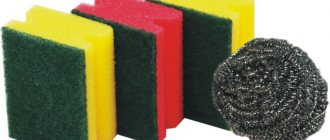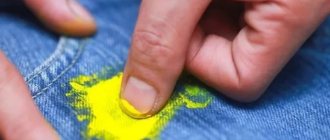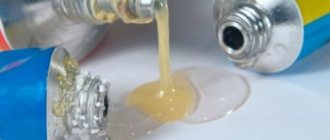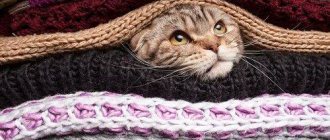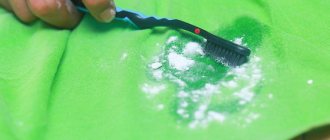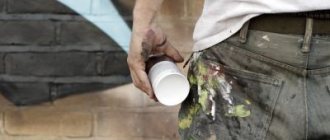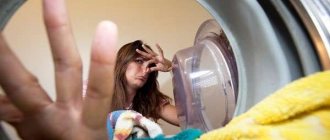Even with careful wear and careful care, things wear out over time and become covered with matted lumps. But if you wish, you can remove the formed pills on clothes and extend the life of the product for a while.
You can remove pellets from clothes only mechanically. The easiest way, which does not require any improvised means, is to tear them off by hand. However, it will only be effective if single pellets appear. Otherwise, it is better to resort to special devices made from improvised materials. The choice of cleaning method depends on the size of the problem and the type of fabric being treated.
Scotch tape (roller with adhesive tape)
Adhesive tape or tape can handle small and loose pellets. To make it work, you should take wide tape. A cut strip of the required length is molded onto the fabric, slightly crumpled and abruptly torn off. The principle of operation of an adhesive tape roller is the same as that of adhesive tape, but it is much more convenient to use - you just need to move the roller over the surface to be treated until it is completely clean. You can also make such a video yourself by wrapping double-sided tape around a bottle.
The same method is convenient for collecting small threads and specks from black fabric.
Special machine
A special machine provides quick and fairly effective removal of pellets . This is a portable device that allows you to process a jacket in a short time and with very high quality.
Such devices are suitable for various fabrics. Even if the sweater is knitted from mohair or angora, a pellet removal machine will handle the situation without damaging or stretching the fabric.
When buying a machine, you should keep in mind that it will require batteries. And with frequent use, they will quickly discharge.
Razor or blade
The razor is not suitable for processing thin, delicate and fleecy fabrics, as well as cashmere. But the razor copes well with pellets on woolen items without a relief pattern. Before work, you need to strongly stretch the product and fix it on a flat surface of a table, window sill or floor. You should shave the fabric in one direction first, and then walk in the other (for example, first from bottom to top, and then from left to right).
Small things, such as socks, mittens, tights, can be put on yourself and then shaved.
Use a razor to carefully cut off the pellets, being careful not to damage the fabric. Naturally, it is better not to remove pellets on expensive items in this way, because one awkward movement will ruin the product.
If there are puffs, it is better not to use a razor or blade, as holes may appear in these places.
Available means
Not every home has a machine for removing unpleasant pellets from things. But fortunately, this method is not the only one. You can solve the problem using:
- regular razor;
- scotch;
- scissors;
- toothbrush;
- roller for cleaning clothes;
- comb;
- sandpaper;
- sponges for washing dishes.
It is worth noting that although these improvised means can get rid of the problem, it will not be easy. In order to effectively cope with the work, you need to know which means can be used in which case. The choice of device depends on the material from which the product is made.
Shaving machine or scissors
A razor or scissors are quite sharp objects, so you need to work with them carefully so as not to cut your clothes.
They are most suitable for “cleaning” knitted or cotton items. For work, it is better to take a new machine that does not have a strip of gel. They use it to cut off the spools on a pre-stretched section of the outfit, carefully running it from top to bottom. It is more convenient to do the work together - one person stretches the fabric, and the second, with smooth movements, trying not to tear the blade from the fabric, cleans it of balls. It is recommended to first clean the back of the clothing, then the front, and finish the procedure by treating the seams. Periodically, the blade must be cleaned of threads collected on it.
By the way, it’s convenient to use a razor if you put tights on your leg, for example, and just “shave them.” And you can do the same when cleaning hats, mittens, socks or leggings. But woolen sweaters with long pile should not be subjected to such treatment. Such products are not very dense, since they are made of thick threads, and when pulled, it becomes very difficult to shave rounds from them without cutting the main fibers.
Those who decide to “restore” a rolled up dress at home using scissors should be prepared for a long and labor-intensive procedure. First, you need to prepare the item: stretch it and, if the structure of the fabric allows, comb it. Then you will need to cut each pellet separately with scissors.
Toothbrush or tape
A toothbrush will come in handy if you need to clean clothes made from thin and delicate materials. This process, unfortunately, also takes a lot of time:
- The product must be laid out on the table and carefully “combed” along the fibers with a brush.
- Pour water and vinegar into a basin in a ratio of 1:3.
- Soak the item in the solution for 3-5 minutes so that the threads become fluffy again.
- Dry laid out on a towel at room temperature.
- Brush dry clothes with a clothes brush with soft bristles.
Tailoring experts fight pilling with tape. This method is very simple, but not very effective. Scotch tape is ideal for removing only small pellets, so it is used for cleaning coats, jackets, suits or thin sweaters. At home, adhesive tape is easy to use if you are faced with the task of removing pills from your pants. Most often they appear on the seams on the inside of the thigh or near the pockets. The work is not difficult, but labor-intensive:
- Fasten the trousers on a flat surface.
- Cut wide tape into strips of 7-10 cm.
- Press the strip firmly onto the area to be cleaned, and then quickly tear it off.
Such manipulations will have to be carried out several times in each area, but dust and dirt are removed along with the pellets.
Instead of tape, you can use a roller with a handle to clean clothes. This device, of course, is more convenient to work with, but the effect of the work done will be worse. It only copes with very small formations. It is often used if you need to clean a thin blouse or dress.
Other methods
There are few devices for restoring rolled up items, but if an urgent problem arises, how to remove pills from a jacket, everything comes into play. Sometimes these methods are very unconventional, so they are recommended to be used with caution.
- Chewing gum. To remove several large pellets, first chew the gum thoroughly and then roll it evenly over the fabric.
- Plasticine. Everything sticks well to this material, and loose threads on clothes are no exception. Just remember that plasticine may leave a mark, so it is not recommended to use it for cleaning light-colored outfits.
- Sandpaper. You can only use sandpaper with zero grit to clean things.
- Crackers. Those who decide to use bread crumbs as a means of resuscitating rolled up clothes should remember that this should only be done with a self-prepared product. To do this, you need to cut the bread or loaf into small cubes and dry them in the oven. The outfit is laid out on a flat surface and gently rubbed with dried cubes.
- Kitchen sponge. This item has two different surfaces. One side is made of soft foam rubber, and the other is made in the form of a hard washcloth. It is with this washcloth that it is recommended to remove unsightly formations from clothes.
How to prevent pilling
As a rule, mechanical removal of the pellets only temporarily solves the problem. To prevent pellets from forming on the fabric in the future, you need to properly and promptly care for it.
To do this you should:
- Follow all recommendations on the care label. There are things that are recommended to be washed by hand, others simply need to be washed on a delicate cycle and not twisted;
- choose the right detergent. There are washing powders that prevent the formation of pellets; special water softening substances are added to them. In addition, the powder must be compatible with the fabric and water composition;
- After washing, it is advisable to rinse things using a softening fabric conditioner;
- At first, the pellets remain small and soft. It is better to remove them immediately after they appear, rather than wait until they become large and hard;
- Ironing should be done at the temperature indicated on the tag.
Preventive measures
The appearance of clothing directly depends on how properly it is cared for. In order not to suffer from the appearance of sloppy balls, not to waste time on eliminating them and money on going to the dry cleaner, it is enough to follow a few simple rules.
- Choosing the right detergents. The powder, bleach, and rinse aid determine how good the clothes will look after washing. You can completely do without a machine if you choose products labeled “for softening fibers.”
- Read the tag carefully. Manufacturers provide detailed instructions for caring for the item. We follow the washing, drying, ironing regime.
- We fix the problem in a timely manner. It is easier to remove “fresh” lumps than those that have survived several washes.
- We put a new item in the freezer. Place the purchased product in a bag and leave it in the freezer for ten hours. Next, defrost it in warm water. The procedure can prevent the appearance of nodules and make clothes softer.
- We say no to hot water. It is best to use gentle washing modes. If things are heavily soiled, add a stain remover.
- We try not to soak it often and not twist it too much. Delicate fabrics, especially wool, require hand washing and drying in a horizontal position. We do not wring out or soak knitwear.
- We go to the dry cleaner. It’s still better to trust expensive clothes to professionals. Otherwise, saving on services will lead to even greater costs, since you will have to buy a new product.
Video on the topic
If you have items in your wardrobe that are prone to knots, they should be stored inside out. It is better not to wear them under outerwear to avoid friction. Knowing how to get rid of pilling on clothes and how to prevent their formation, it will not be difficult to keep them in proper presentable form. What could be better than a favorite blouse or a luxurious coat that can be worn for more than one season.
Features of cleaning different things
Depending on the type of product, the methods for removing pellets will differ:
- Classic pants . Their stray hairs are especially noticeable, even if they are small. You need to handle the trousers carefully, as even a slight snag can cause the threads to unravel. For care, it is recommended to use a toothbrush.
Jeans. Denim fabric is quite dense, pills rarely form on it, and they accumulate in places of high friction.
To deal with them, you can use a razor or scissors.- Sweatpants are more susceptible to the formation of small pills, of which there can be a lot. To clean them, it is better to use a machine. This device does not leave puffs behind and allows you to carefully remove even multiple stray fibers on the fabric.
Recommendations
in the process of removing pellets :
The less neglected the condition of the item, the easier it will be to deal with defects.- In some cases, when treating a sweater for pilling, you may need to use several methods at once. This is usually typical for worn items with a large number of defects.
- If you don’t have time to remove pellets, you can use dry cleaning.
If the sweater is made from low-quality material, then costing will occur even if the product is properly cared for.
Methods and means for removing pills from clothes are discussed in detail in this section.
Preparing clothes
Before moving on to removing flaws, the item needs to be prepared:
- Determine the type of fabric. The choice of processing depends on this. For example, a wool sweater should not be removed using aggressive methods.
- Determine the scale of the tragedy. For example, pellets that have just appeared in a small amount can be carefully removed with your fingers.
- Lay the clothes out on a flat surface and stretch them out a little. Prepare the necessary tools and a box (cup, bowl, bag) for the collected lumps.
What not to do?
When removing pills from a sweater, the following prohibitions must be taken into account:
- You should not rush, this is especially important when using methods with a razor and scissors, as this poses a risk of damaging the material.
- It is forbidden to use force, as careless movements may cause the item to become deformed or damaged.
- You should not use a knife, open blade, scalpel or other devices, as this increases the likelihood of damaging the item and injuring the person who is processing the jacket.
